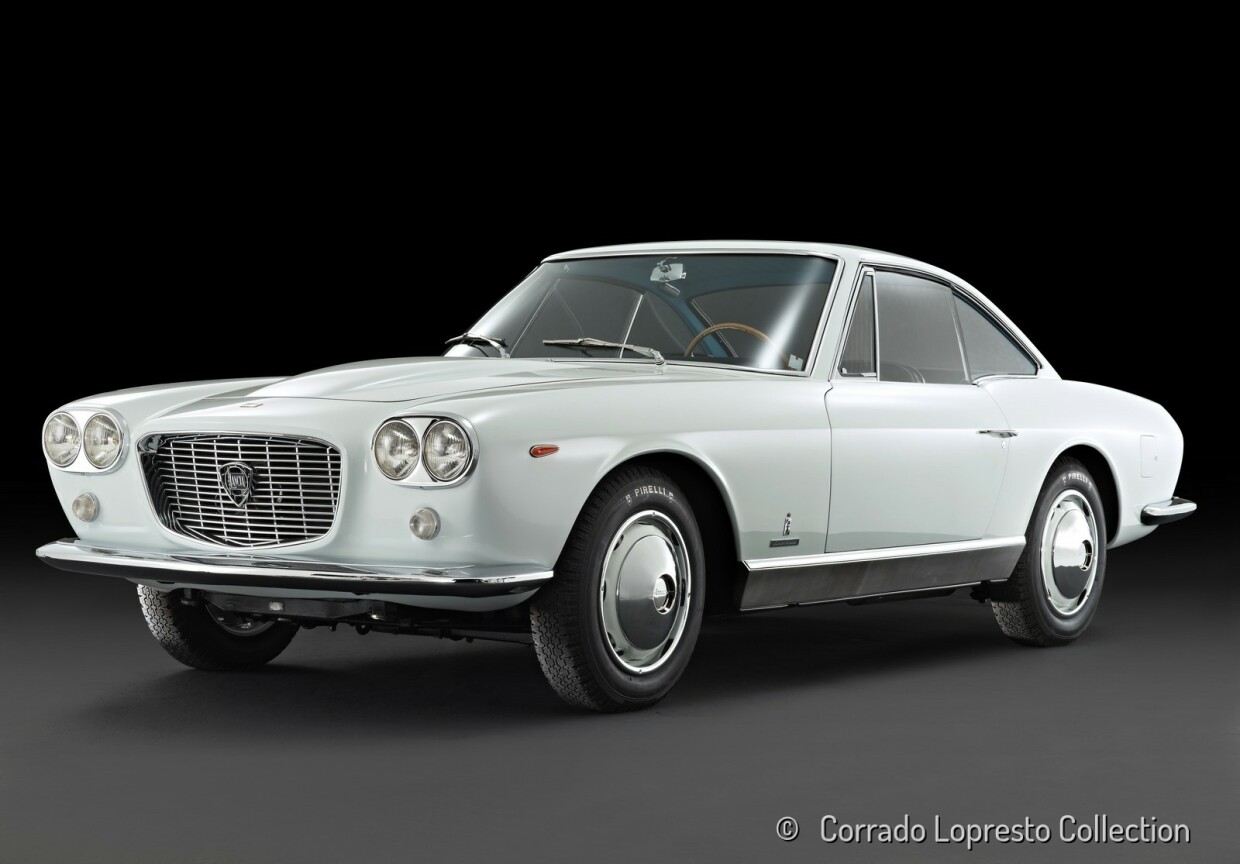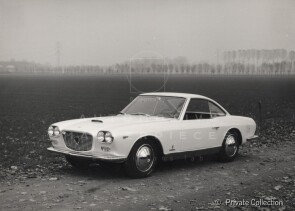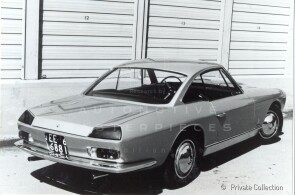
1963 Lancia Flaminia 3C Speciale
ON/OFF
Why am I an Automotive Masterpiece?
The Lancia Flaminia was born in 1956, in the sedan version, to replace the previous Aurelia. Elegant and classy, it imposed itself on the automotive market as the "representative car". It is a large car, equipped with a 6-cylinder V engine with two and a half liters displacement, delivering about 100 hp, which makes it reach a top speed of 160 km/h. The chosen name of a Roman consular road maintains the road taken by Lancia with the Aurelia and the Appia. The style marks an epochal turning point and influences the whole car production. For the first time, the compact and curvilinear style is abandoned for a bodywork composed of various surfaces joined together with edges, thus obtaining a long and elegant car profile. The success of the Flaminia sedan was immediate, forcing Lancia to immediately think of a sports version. Lancia decided to create a single frame that could be covered by the best Italian coachbuilders, thus giving birth to the three sports versions of Pininfarina, Zagato and Touring, all with a coupé shape but very different from each other, presented in 1958 during the XV Turin Motor Show. The best sports version is certainly the one designed by Zagato which shortens the pace, lightens the car and looks for a better performance. Touring presents a version that combines luxury and sportiness, while the Pininfarina coupe remains a luxury model that can also carry up to 4 people. The Pininfarina version stands out for the reduction in the longitudinal dimensions and for the absence of the rear doors. The Turin master started from the prototype of the previous year: "Florida", abandoned the American-style windscreen and streamlined the rear, made the curvilinear lines lose for the first time and gave space to new edges. The mechanics in the Pininfarina’s version did not present great revolutions other than the shortening of the wheelbase, the increase in power that went from 100 hp to 119, pushing it up to 170 km / h: the only change of excellence was the disc brakes. Although it took part in motor racing competitions with good successes, this coupé remained more of a representation car than a sports car. In 1963 at the Frankfurt Motor Show, Pininfarina presented the third series "3B-2.8", the bodywork did not undergo any change, but the mechanics were elaborated, thanks to a 2.8-liter engine, more elastic with a much more powerful torque, obtaining a significant improvement in the resumption without however affecting the top speed which went from 171 to 181 km/h.
In 1963, one of the best creative seasons for Tom Tjaarda, at the time in Pininfarina, the coachbuilder built an elegant two-seater coupé on Lancia Flaminia 2.8 mechanical components with a wheelbase of 2750 mm and unveiled it as a one-off at the Salone dell’Automobile di Torino. It highlighted smooth, sober side panels as well as the front end including the classic Lancia radiator grill and twin headlights, clearly derived from those of the 1961 Flavia Coupé 1500, a car produced by Pininfarina since the summer of 1962. In addition to Turin in 1963, the car was also exhibited at the 1964 Brussels Motor Show, and 1965 Elegance Shows in Alassio and Cortina d’Ampezzo. After those shows, in 1965, the car became the personal transport of Battista Pininfarina. Functional rear lights from a Lancia Flavia were added, and the color changed to champagne. Pininfarina SpA retained the car until 1972. After Pininfarina, the car was owned by collectors in various parts of the world that changed color; now the car is back in its original white.





